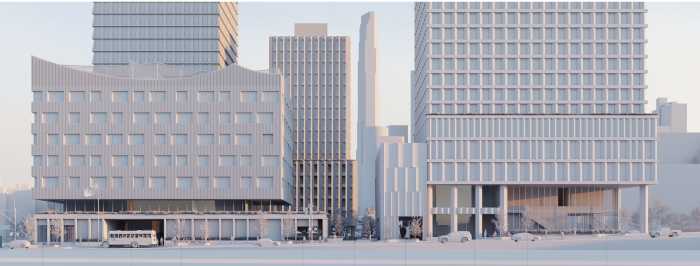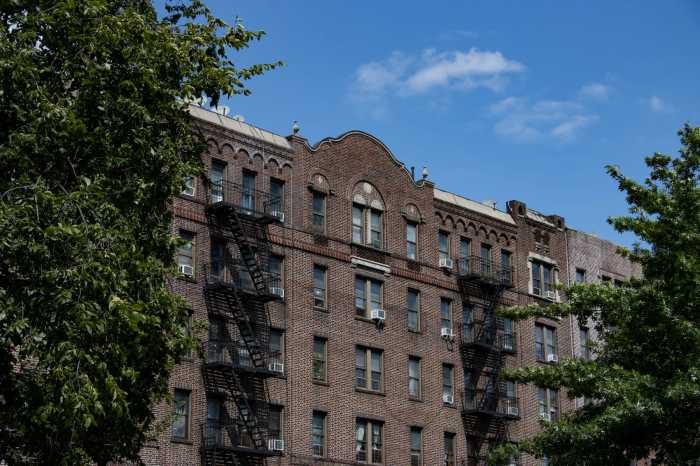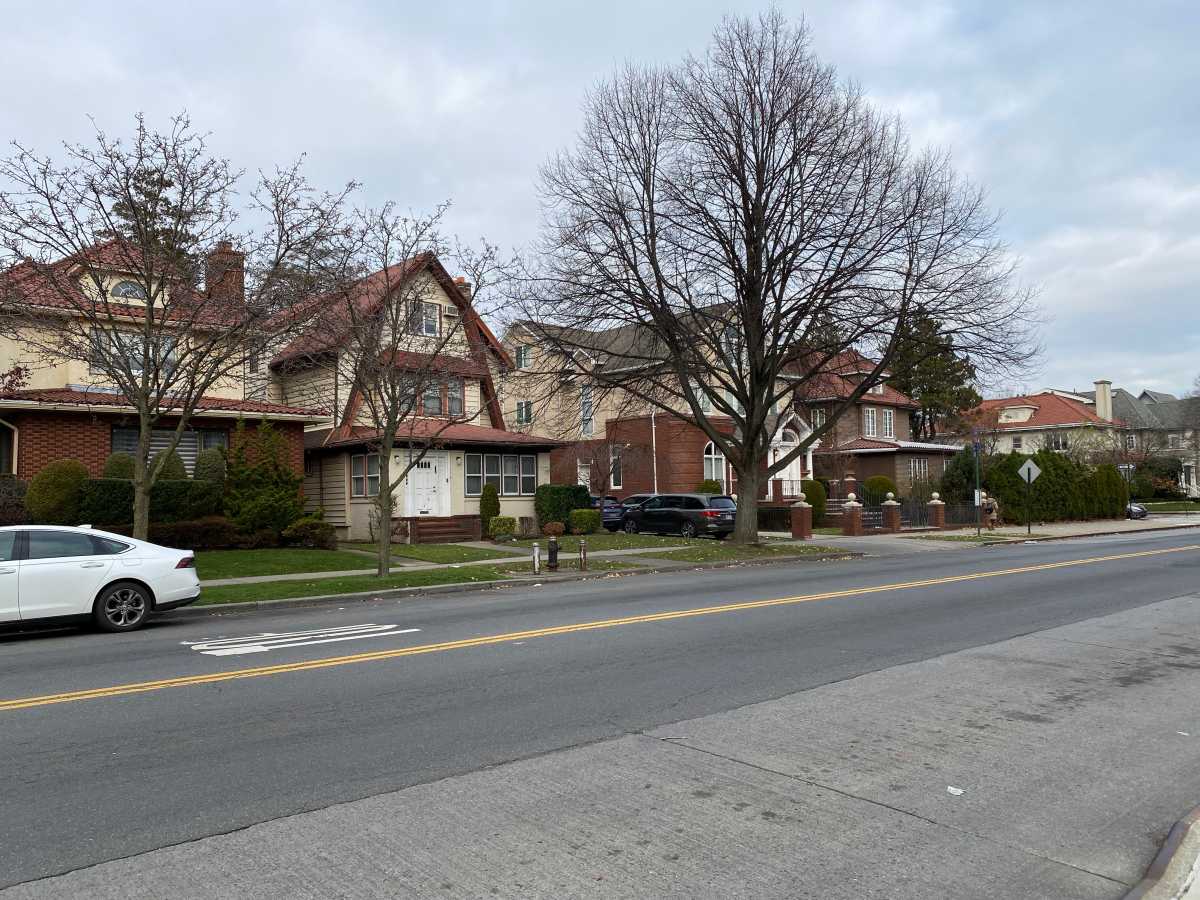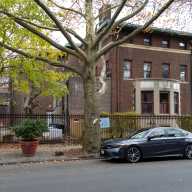It’s the largest Brooklyn development project in nearly three decades,
but Bruce Ratner’s Atlantic Yards basketball arena, office tower
and housing project will not have to pass through city review.
And that, say members of the three community boards within whose bounds
the plan would be built, is just plain wrong.
Community boards 2 (Brooklyn Heights, Downtown Brooklyn, Boerum Hill,
Fort Greene and Clinton Hill), 6 (Park Slope, Gowanus, Cobble Hill, Carroll
Gardens and Red Hook) and 8 (Prospect Heights and Crown Heights) all voted
at their last meetings to call on city and state officials to put the
plan through the city’s Uniform Land Use Review Procedure (ULURP).
The boards collectively agreed to introduce the votes on Sept. 8 after
officials from two agencies with key roles in the proposed sale of development
rights in the Atlantic Yards area to Ratner — the Empire State Development
Corporation (ESDC) and the Metropolitan Transportation Authority (MTA)
— declined invitations to speak at a town hall meeting for members
of the three community boards.
Encompassing the area from Atlantic Avenue to Dean Street between Vanderbilt
and Flatbush avenues, the proposed development would include a new home
for Ratner’s recently purchased New Jersey Nets basketball team,
three soaring office towers, 4,500 housing units and 2 million square
feet of retail space. The $2.5 billion arena plan is projected to cost
city taxpayers an estimated $500 million.
Since the MTA controls the Long Island Rail Road yards over which roughly
a third of the project would be built, its support is crucial, as is that
of Gov. George Pataki, whose ESDC would be needed to condemn 10 acres
of private property in order for Ratner to realize his dream.
If the ESDC sponsors the plan, it will then be able to sidestep the rigorous
ULURP process that development projects of such scale would normally trigger
in the city. The community boards individually drafted letters to Pataki
and Mayor Michael Bloomberg, appealing for assistance in getting cooperation
from the agencies they control and for a mandatory ULURP to be implemented.
The three boards “have been planning for some time to have a public
education hearing at which time we’d have the ESDC explain the process
which we feel is Forest City Ratner’s definition of the project.
We have concerns that there’s not going to be sufficient opportunity
for public comment,” said Robert Perris, district manager of CB2.
Perris said the letter drafted by CB2 called for the project to be “subject
to the preclusion of the abuse of eminent domain and for competitive bidding
for the acquisition of the MTA rail yard.” Though he said the “abuse”
clause could be left open to interpretation, the primary concern was the
process.
Craig Hammerman, district manager of CB6, said the members were concerned
about the reluctance of the agencies to inform the public. “Our greatest
disappointment is the fact that this is not a small process by any means,
and that the state agencies should be willing to talk to us all about
what process is going to take place,” said Hammerman. “We can
never really discuss things too early. If it was city agencies we were
dealing with I would have expected them to be more responsive and accountable.”
Deborah Wetzler, an ESDC spokeswoman, said her agency declined the invitation
because no decision has yet been made about the state’s involvement
in the project.
“It’s way too premature,” she told The Brooklyn Papers.
Two activist groups — Develop-Don’t Destroy Brooklyn, which
formed in opposition to Ratner’s plan, and the New York Public Interest
Research Group (NYPIRG) have previously called for an Atlantic Yards ULURP,
but neither received a response from the mayor or governor.
“The call for ULURP is getting louder and louder, and to have the
three boards who are going to be affected by the project call for it is
very important,” said Daniel Goldstein, a spokesman for Develop-Don’t
Destroy Brooklyn.
Both groups became vocal after Assembly Speaker Sheldon Silver, a Democrat
from Manhattan, publicly called for the plans for a new Jets football
stadium on Manhattan’s West Side to be put through ULURP, despite
Bloomberg and Pataki’s efforts to tack the stadium plan onto an expansion
of the Jacob Javits Center, which would not require a ULURP.
On July 9, Prospect Heights Councilwoman Letitia James delivered letters
to Bloomberg and Council Speaker Gifford Miller asking them to ensure
that the Ratner proposal be subject to ULURP. Her letter to the mayor
cited a statement he made last December: “We are not at a time when
we can use public funds to support an arena.”
Gene Russianoff, an attorney for NYPIRG, charged that Brooklyn Borough
President Marty Markowitz, one of the staunchest political champions of
the Nets arena plan, has treated ULURP as if it were merely “a device
to derail the project.”
Asked whether Atlantic Yards should go through the city review process,
Markowitz, who has powers of land use oversight under ULURP, told The
Brooklyn Papers in June, “ULURP is not applicable.” Contacted
this week for a response to the community boards’ requests, he shied
away from supporting their call for ULURP.
“We respect the community boards and understand their position. We
couldn’t agree more that whether this is a city or a state process,
community participation is a must and the community’s voice needs
to be heard. My staff and I have been dedicated, from day one, to establishing
a process for real community empowerment for the Atlantic Yards project,”
Markowitz said through a spokeswoman.
Russianoff believes the obvious is being overlooked.
“It’s not like ULURP is some fearsome process,” he said.
“The vast majority of development proposals go through ULURP. They
get researched, modified and changed.”
Councilwoman James is already focused on the next step.
“I’m trying to hold a meeting with the chairpersons [of the
community boards],” she said, to figure out before ESDC signs on
to the project in a memorandum of understanding, what might be coming
and how to help their communities cope.
She believes Ratner has an uphill battle ahead of him, though.
“It’s going to take him a lot to do eminent domain for those
who are in the footprint of the plans,” said James. “There are
many people who will refuse to be bought out.”
























